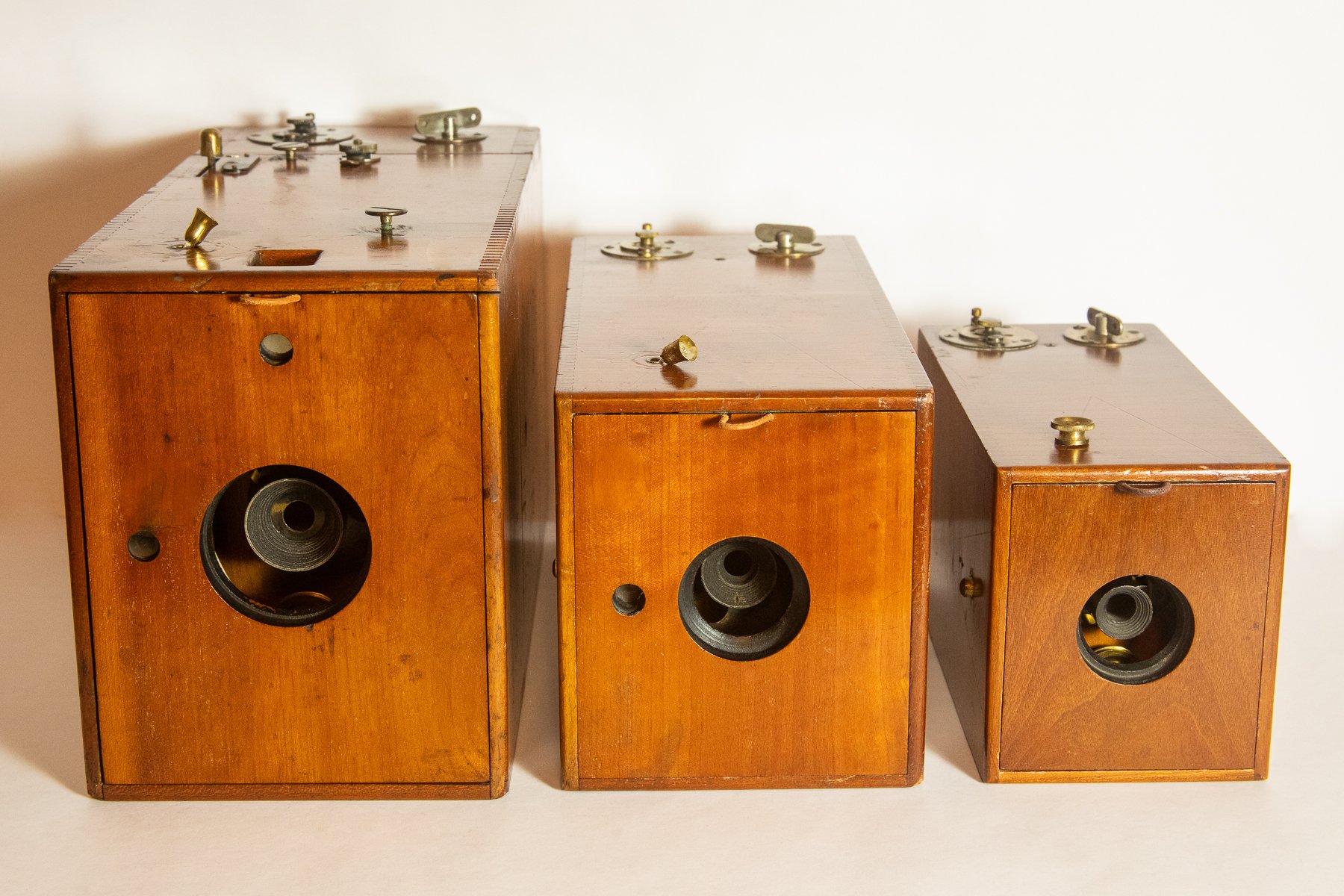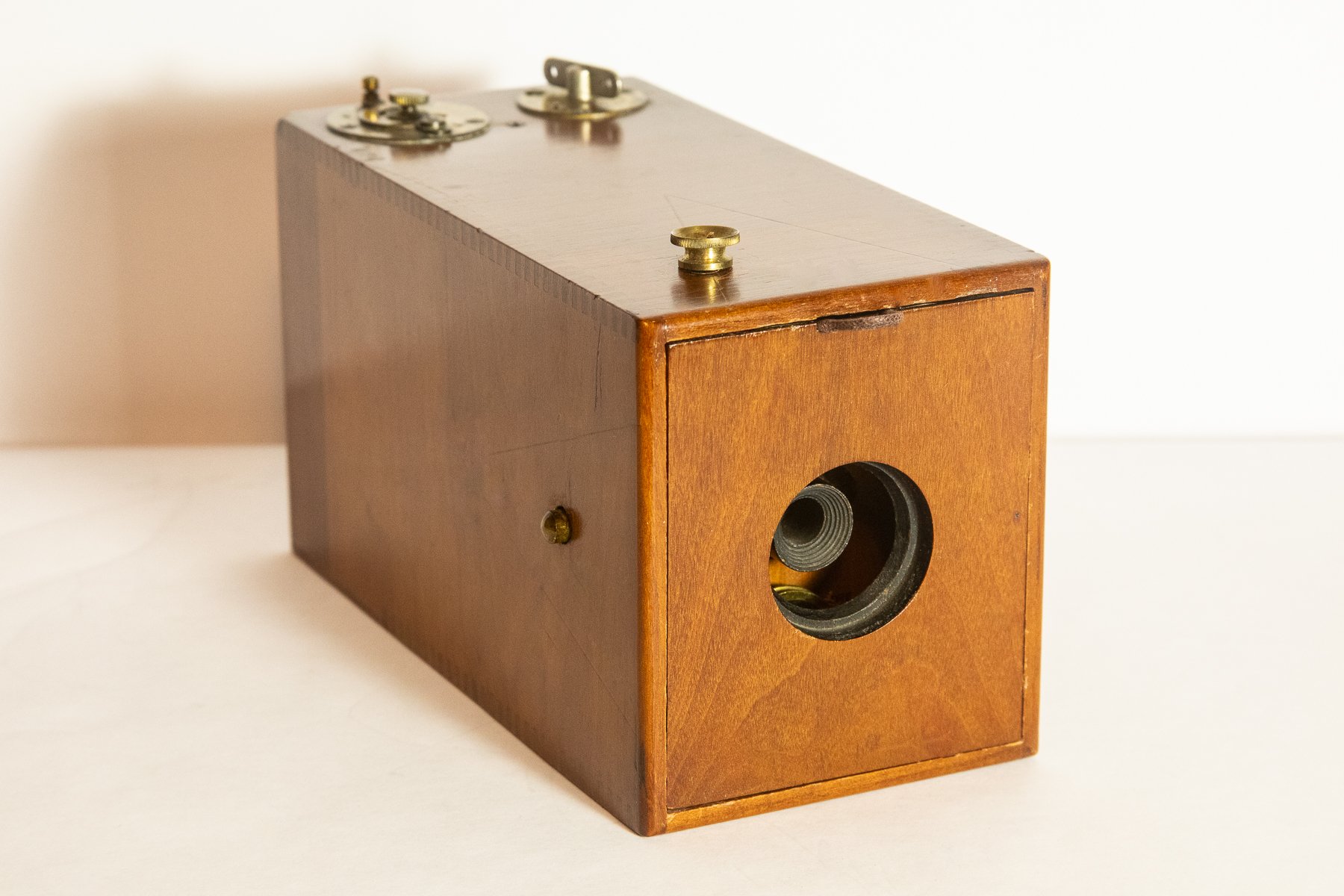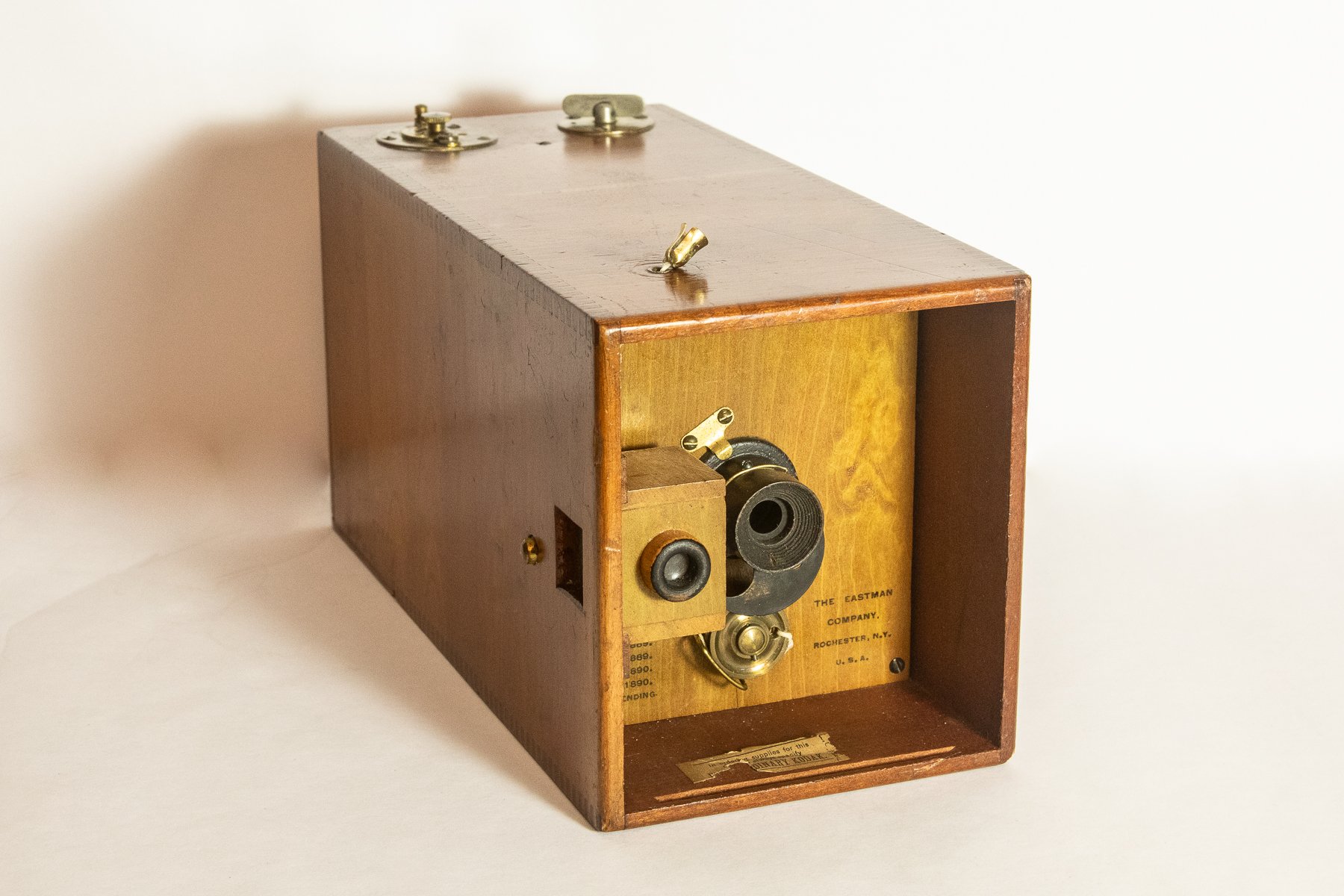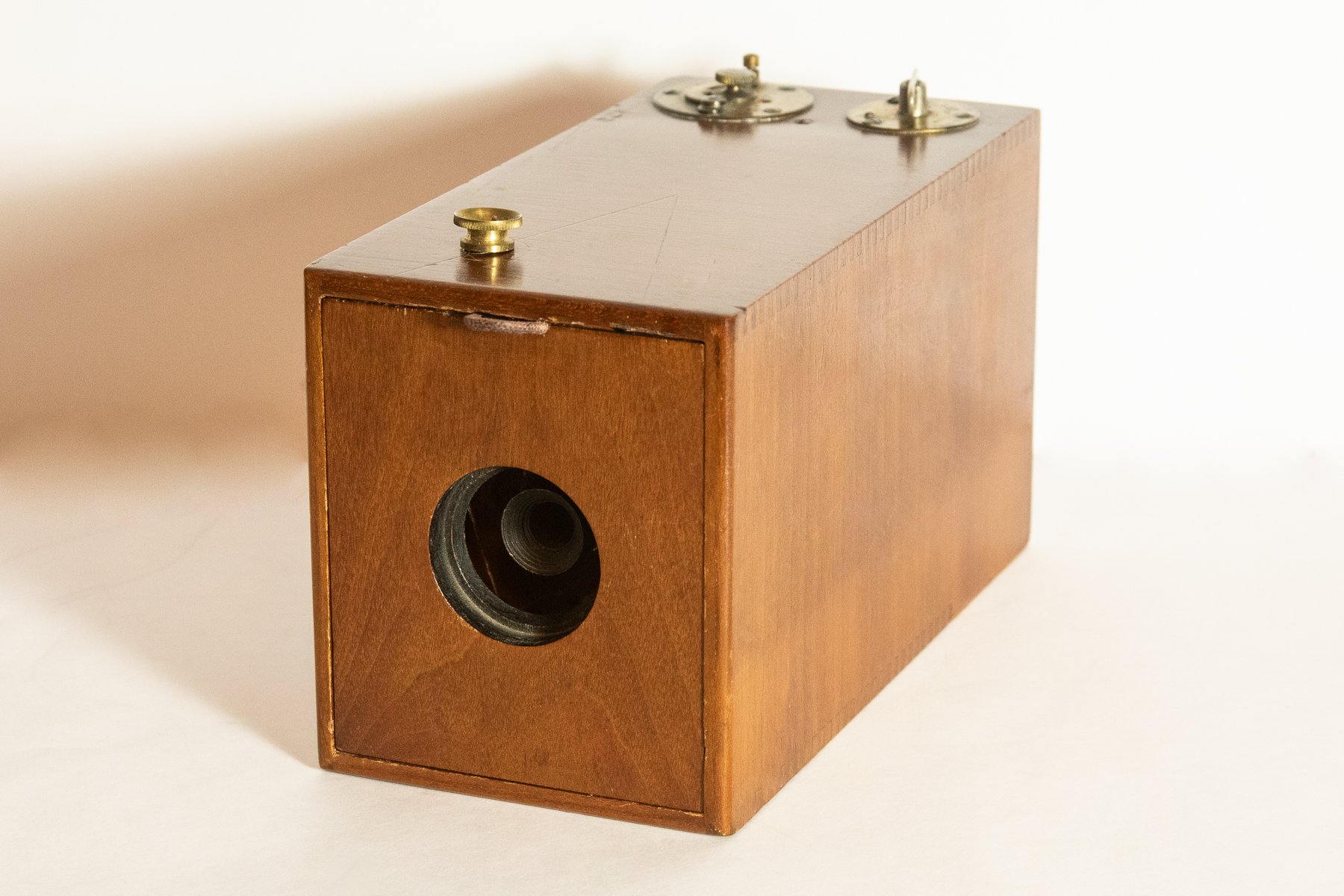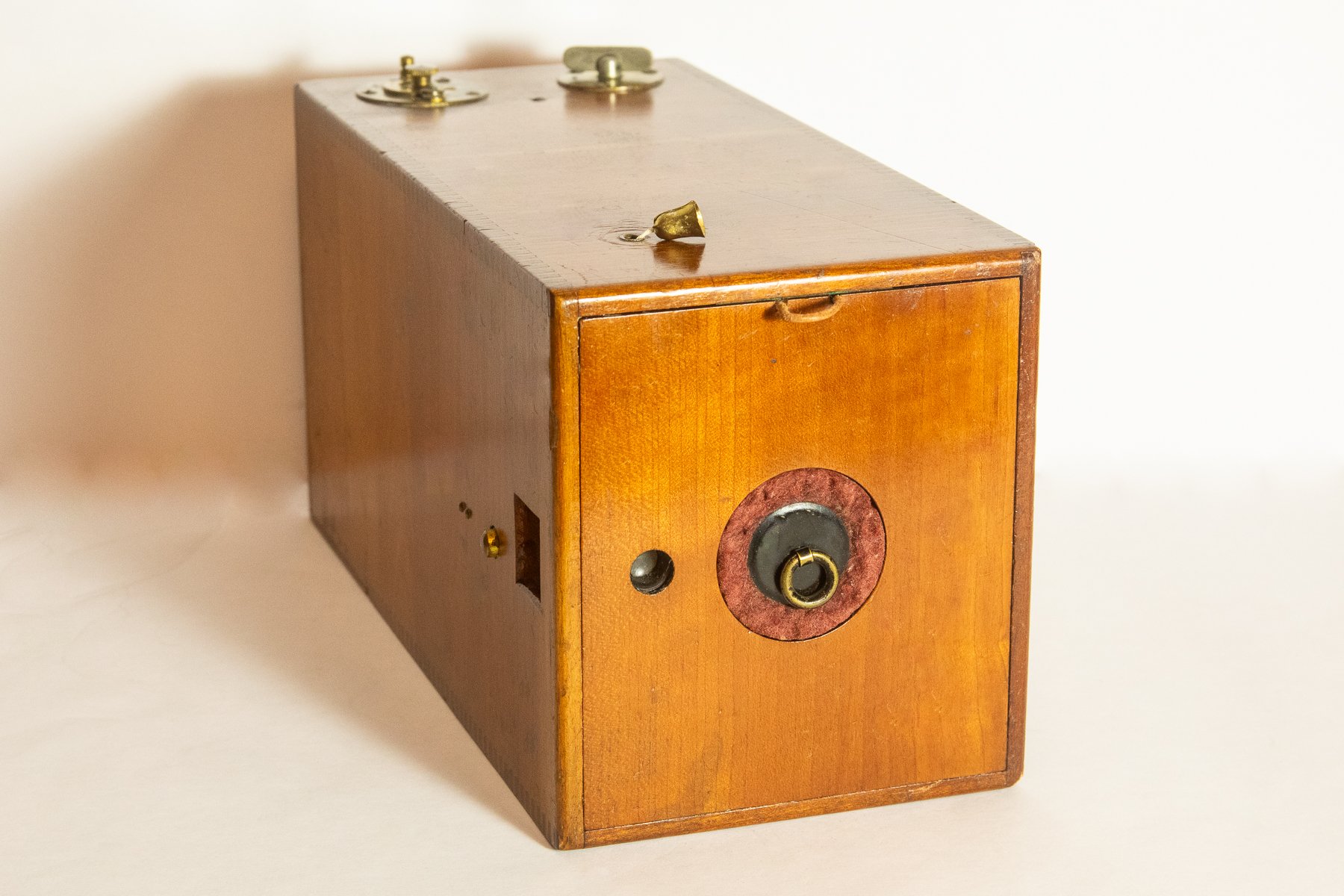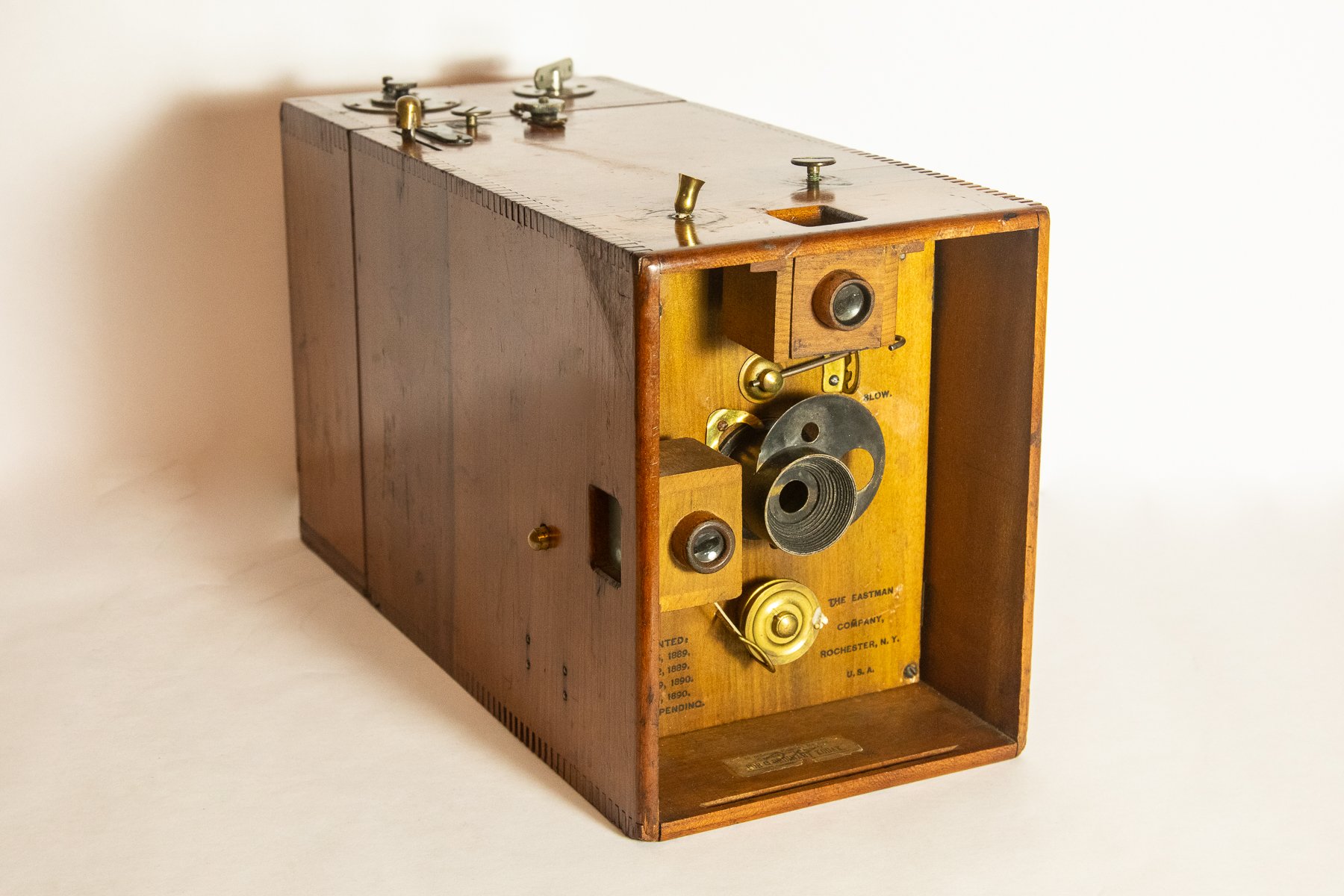ABC Ordinary Series
Eastman Kodak Company
Rochester, NY
1891 - 1895
The Kodak “Ordinary” series was released in 1891 and sold up to 1895. Altogether, there were three models in the Ordinary line - models A, B and C. The letters mainly denoted different film sizes, although the model C was special in that it could accept either roll-film or glass plates. The model A created a 2 3/4 x 3 1/4 inch image, the model B created a 3 1/2 x 4 inch image, and the model C produced 4 x 5 inch images. All Ordinary camera models accepted roll-film for 24 exposures.
The B & C models were larger and more popular, making the compact Ordinary A the scarcest today. Made to be inexpensive (only $6 for the A, versus $25 for the similarly-sized Kodak No. 1), the wooden cases were left in uncovered natural wood, unlike all of Kodak's standard cameras which were covered in costly black leather (and later, leatherette). By today's standards, the Ordinary's beautifully polished wood body with brass fittings is considered much more attractive than the common black leather cameras of that time.
Like other Kodaks of the era, the shutter must be cocked by pulling a string on the top in order to prepare it to fire. Collectors refer to these as “string-set” cameras. The Model A Ordinary is about the same size as the compact Original Kodak of 1888, measuring only 3-1/2” x 4” x 7-1/4”, and weighing just over a pound.
